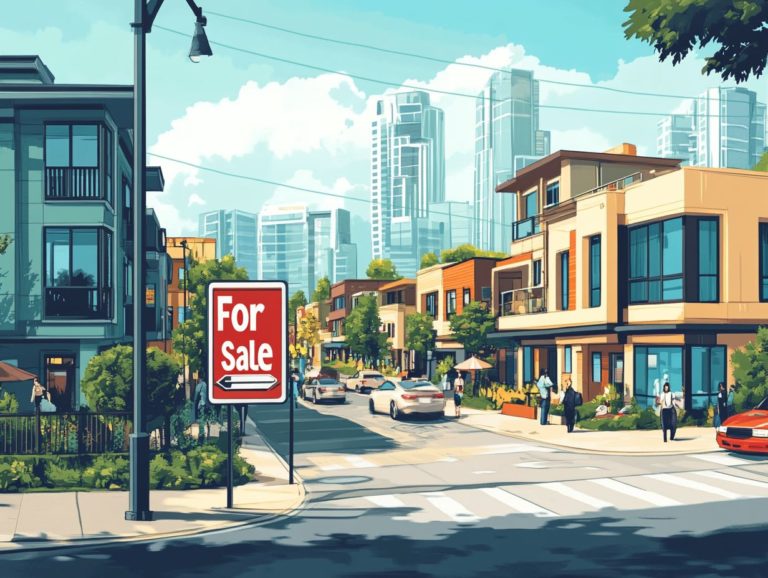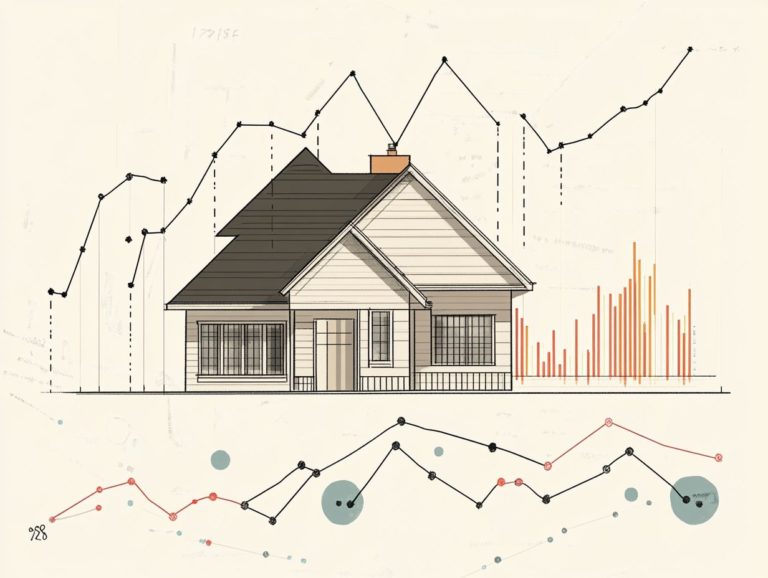Trends in Sustainable Home Buying
As concerns about climate change and environmental sustainability intensify, the trend of sustainable home buying is increasingly captivating prospective homeowners like yourself.
This exploration delves into the factors fueling this shift, shedding light on the environmental and financial advantages of choosing sustainable properties. From essential features to innovative technologies, we’ll detail what truly defines a sustainable home.
You’ll also discover the challenges that may arise during your search and receive practical tips for navigating the sustainable housing market effectively.
Dive in as you uncover the future of home buying.
Contents
- Key Takeaways:
- The Rise of Sustainable Home Buying
- Benefits of Sustainable Home Buying
- Features of a Sustainable Home
- Conclusion
- The Role of Technology in Sustainable Homes
- Challenges and Limitations of Sustainable Home Buying
- Tips for Finding and Purchasing a Sustainable Home
- Frequently Asked Questions
- What exactly is sustainable home buying?
- What are some current trends in sustainable home buying?
- How does sustainable home buying benefit the environment?
- Are there any financial benefits to sustainable home buying?
- What should I look for in a sustainable home?
- How can I incorporate sustainable features into my current home?
Key Takeaways:
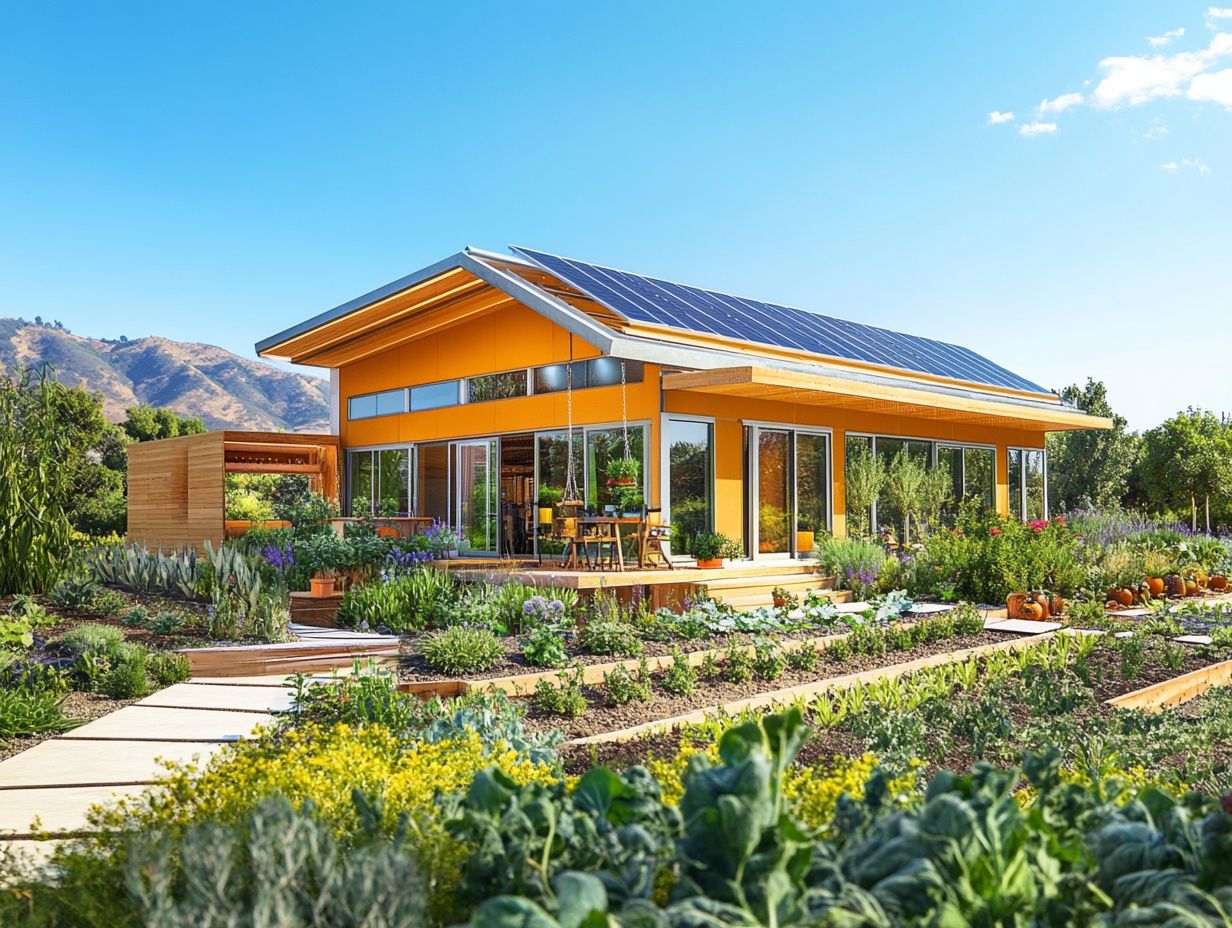
- Sustainable home buying is a growing trend driven by environmental concerns and financial benefits.
- Sustainable homes offer both environmental and financial advantages, with key features such as energy efficiency and sustainable materials.
- Technology plays a key role in sustainable homes, with innovative solutions and smart home features becoming increasingly popular.
The Rise of Sustainable Home Buying
The rise of sustainable home buying indicates a profound shift in consumer preferences. Modern buyers like you increasingly prioritize eco-conscious values and energy efficiency in your purchasing decisions.
As awareness of environmental impact expands, so does the demand for homes featuring advanced technologies and eco-friendly materials. This trend is reshaping the residential landscape and influencing market dynamics, as more prospective homeowners seek properties that resonate with their commitment to green living and reducing their carbon footprint.
Factors Driving the Trend
Several factors drive your trend toward sustainable home buying, including growing awareness of environmental performance and advancements in energy-efficient systems.
As you seek homes that minimize your carbon footprint, incorporating renewable energy sources like solar panels and wind turbines becomes highly desirable. Eco-friendly construction practices, such as using sustainable materials and efficient insulation, are essential in creating homes that conserve energy and enhance your overall well-being.
The rising popularity of wellness real estate highlights the significance of indoor air quality and access to natural light, making these properties even more attractive if you prioritize healthy living environments.
Benefits of Sustainable Home Buying
The advantages of sustainable home buying reach far beyond environmental considerations.
You ll find substantial financial benefits alongside an enriched quality of life, all thanks to effective energy and water conservation strategies.
Environmental and Financial Advantages
Sustainable homes offer a wealth of environmental and financial benefits, including reduced carbon footprints, lower energy costs, and the adoption of energy-efficient appliances and greywater reuse systems.
These eco-friendly innovations help minimize your utility bills and play a significant role in cutting down greenhouse gas emissions.
Energy-efficient appliances, like ENERGY STAR-rated refrigerators and washing machines, use less electricity and water, leading to cost savings that accumulate over time. Greywater reuse repurposing water from sinks, showers, and washing machines for irrigation or flushing toilets further conserves precious resources, driving down your overall water expenses.
Together, these sustainable strategies bolster your home’s resilience against energy price fluctuations while fostering a healthier and more sustainable living environment.
Features of a Sustainable Home
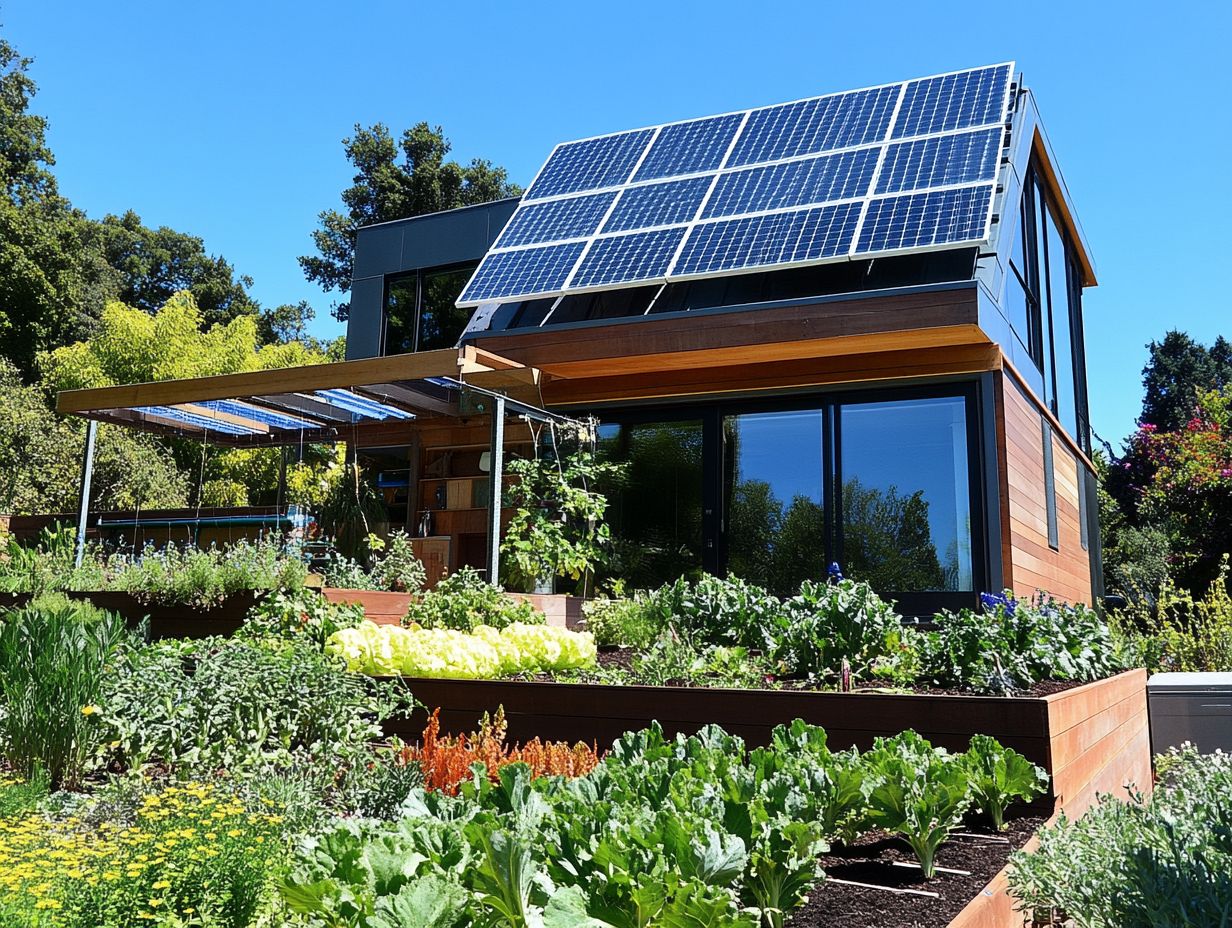
When evaluating the features of a sustainable home, focus on green elements emphasizing energy efficiency, sustainable materials, and advanced smart home technologies along with passive design principles.
Conclusion
In summary, sustainable home buying not only benefits the environment but also enhances your quality of life and financial stability. Don t miss out on the chance to improve your life with sustainable living! Start your journey to a sustainable home today!
Key Elements to Look For
When considering sustainable homes, focus on essential elements like energy-saving systems, biophilic design that enhances indoor air quality, and green amenities that promote a healthy lifestyle.
These features work together seamlessly to create a living environment that reduces energy consumption and nurtures your connection to nature.
Energy-saving systems, such as solar panels and modern HVAC units, can help lower your utility bills while minimizing your carbon footprint.
Biophilic design incorporates natural elements into your living space, improving ventilation and lighting to uplift your overall well-being.
By incorporating green amenities like community gardens and eco-friendly materials, you enrich your daily life and strengthen your commitment to sustainable living.
The Role of Technology in Sustainable Homes
Technology is a cornerstone in creating sustainable homes. Smart home innovations offer sophisticated energy management systems and solutions that significantly improve environmental performance.
Embracing these advancements elevates your living space while positively impacting the planet.
Innovative Solutions and Smart Home Features
Innovative solutions and smart home features, such as energy-efficient appliances and water conservation systems, are vital to modern sustainable homes, utilizing the latest building materials.
Integrating advanced technologies like smart thermostats, which adapt to your habits, can significantly reduce energy consumption.
Water-saving fixtures, including low-flow toilets and smart irrigation systems, actively monitor usage and adjust based on environmental conditions, promoting effective conservation.
Using sustainable building materials like recycled steel and eco-friendly insulation minimizes your carbon footprint and enhances energy efficiency within your home.
Together, these components foster an environment that prioritizes sustainability, showcasing a lifestyle that embraces resourcefulness and environmental responsibility.
Challenges and Limitations of Sustainable Home Buying
While sustainable home buying offers myriad benefits, you might face some challenges that could deter you from pursuing these options.
High upfront costs and limited market options are common hurdles that eco-conscious homeowners like you may encounter.
High Upfront Costs
Costs and accessibility issues pose significant challenges as you explore sustainable homes. Financial obstacles can greatly influence your decisions regarding eco-friendly construction.
These financial barriers often stem from the initial investment needed for innovative building materials and energy-saving systems, which can be higher than traditional alternatives.
As a potential homeowner, you may find yourself navigating a landscape with scarce financing options specifically designed for sustainable properties, requiring thorough research.
While various green loans and incentives exist, you might feel uncertain about your eligibility and the complexities involved in accessing them.
Eco-friendly construction practices, such as using reclaimed materials and integrating renewable energy sources, offer long-term benefits but may introduce unexpected costs that require careful budgeting.
Tips for Finding and Purchasing a Sustainable Home
Finding and purchasing a sustainable home requires thoughtful consideration and thorough research. As a potential buyer, ask essential questions regarding sustainable certifications and other important pre-purchase factors.
This approach ensures you make an informed decision that aligns with your values and long-term goals.
Start your journey to a sustainable home today! Explore your options!
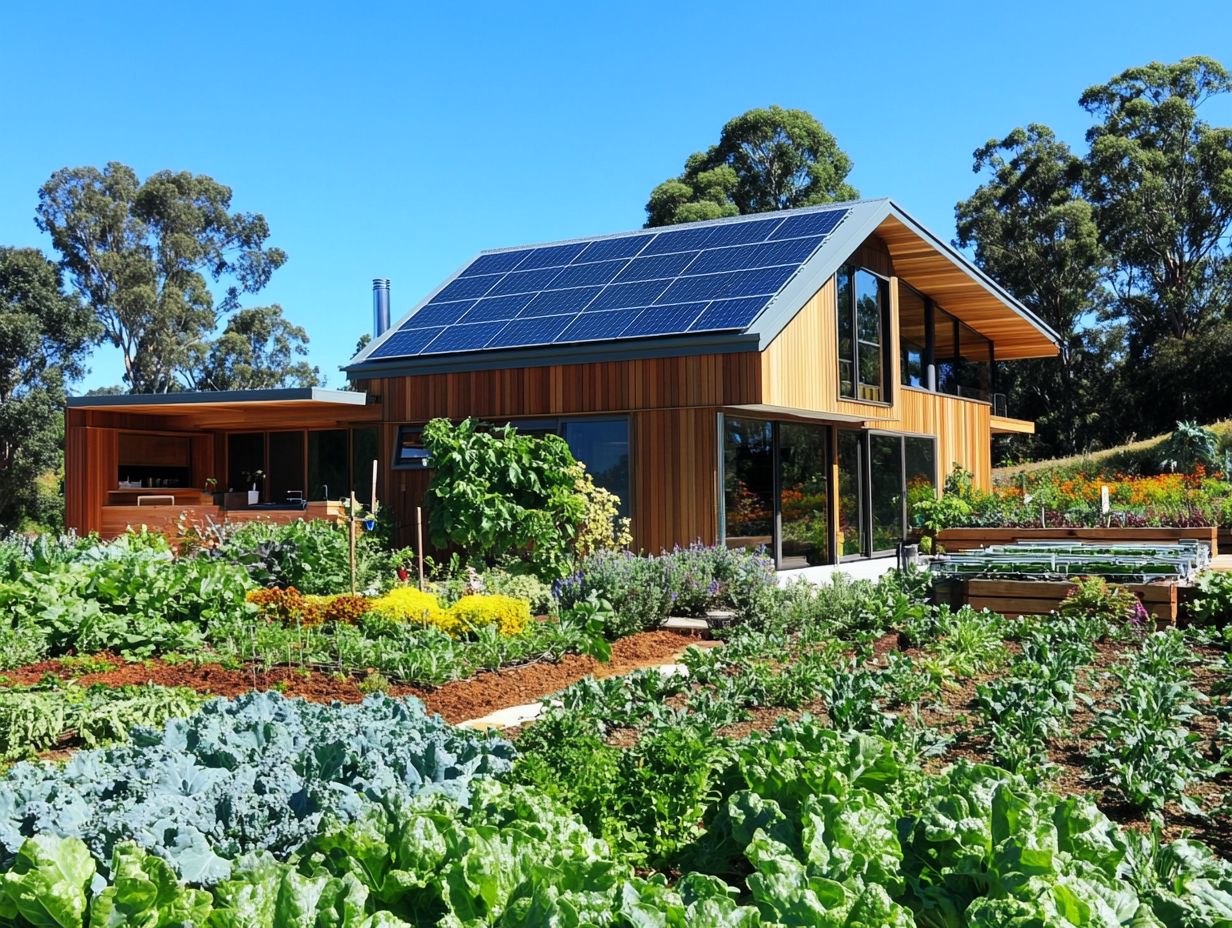
What to Look for and Questions to Ask
When you’re on the hunt for sustainable homes, it s crucial to focus on eco-friendly materials and energy-efficient systems. Be sure to ask about inspections and certifications that affirm quality and sustainability.
Consider including renewable energy sources like solar panels or geothermal heating. Understanding the home s insulation and ventilation systems is vital for minimizing energy consumption.
Don t hesitate to inquire about any third-party certifications that support the property s sustainability claims. Certifications like LEED (Leadership in Energy and Environmental Design) or Energy Star signify a commitment to eco-friendly practices.
These details not only reduce the home’s impact on the environment but also pave the way for long-term savings on utility bills. This makes your investment both responsible and economically savvy!
Frequently Asked Questions
What exactly is sustainable home buying?
Sustainable home buying refers to purchasing a home designed with environmentally friendly and energy-efficient features. This process reduces the home’s impact on the environment and promotes a healthier living space for residents.
What are some current trends in sustainable home buying?
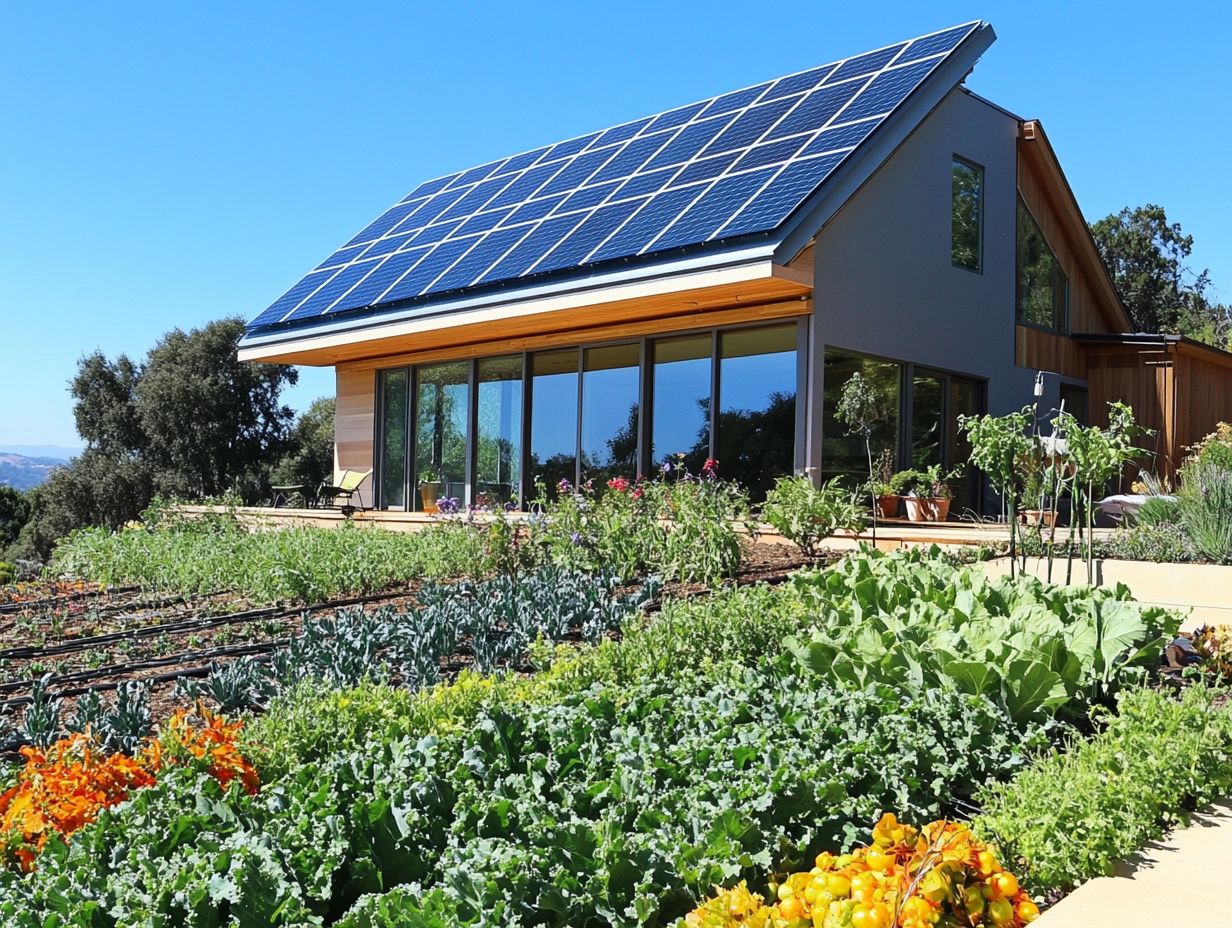
Current trends include using renewable energy sources like solar panels, incorporating green building materials, and installing energy-efficient appliances. Water conservation systems are also becoming increasingly popular.
How does sustainable home buying benefit the environment?
Sustainable home buying reduces carbon emissions, conserves natural resources, and promotes renewable energy use. These practices help combat climate change and preserve the planet for future generations.
Are there any financial benefits to sustainable home buying?
Yes, energy-efficient homes typically have lower utility bills, saving homeowners money in the long run. Many cities and states offer tax incentives for purchasing eco-friendly homes, so act now to take advantage of these potential breaks!
What should I look for in a sustainable home?
When searching for a sustainable home, consider its energy efficiency, the use of green building materials, and renewable energy sources. Other important factors include water conservation systems, indoor air quality, and the overall environmental impact.
How can I incorporate sustainable features into my current home?
If you aren’t in the market for a new home, you can still enhance your current home s eco-friendliness. Start by installing energy-efficient appliances or using eco-friendly cleaning products. Simple changes, like using LED light bulbs and investing in smart home technology, can significantly reduce energy consumption!
Embrace the opportunity to make your home more sustainable today!





